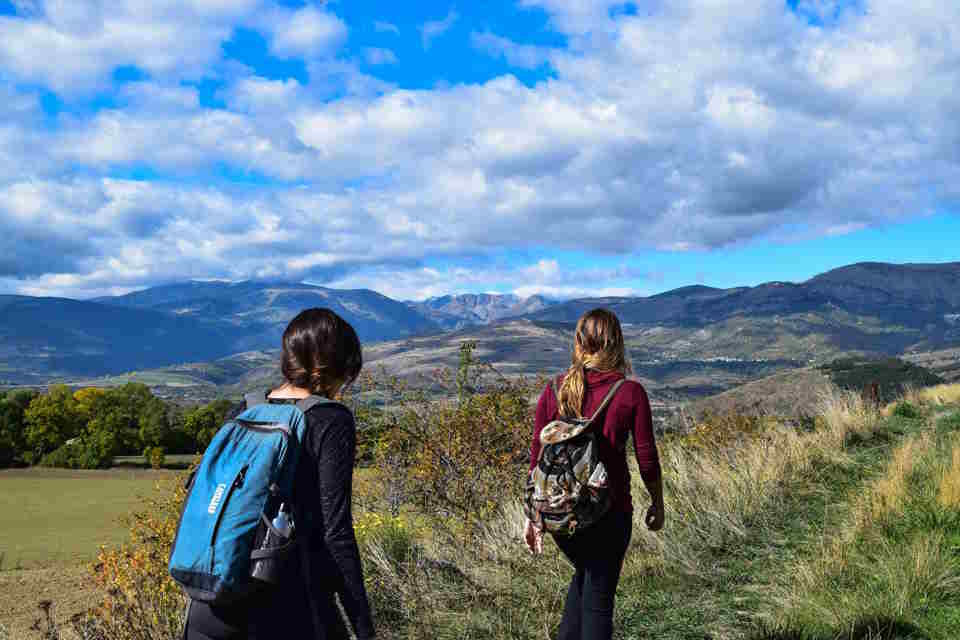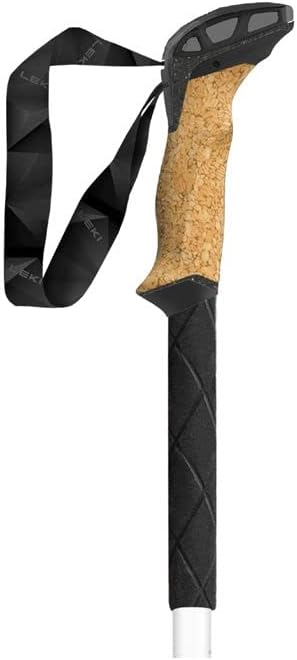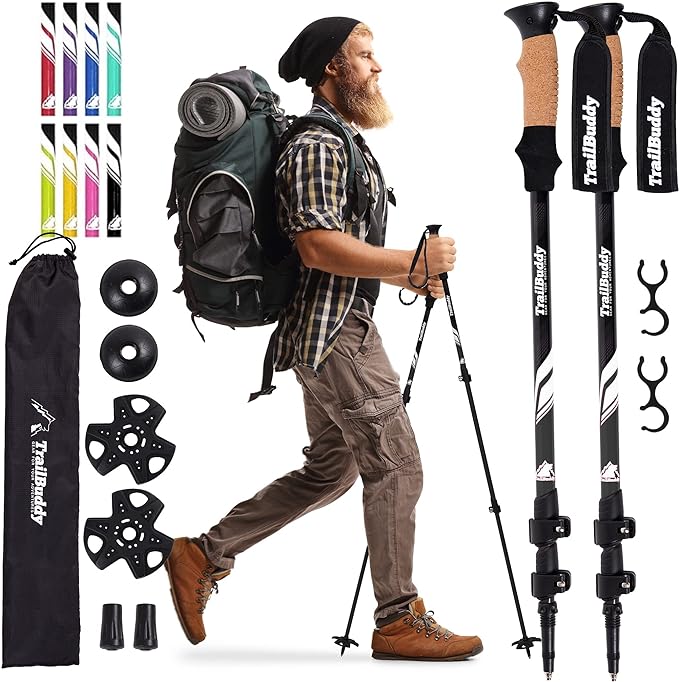Are you considering using trekking poles for your next outdoor adventure? Trekking poles may not be a must-have for every hiker or backpacker, but they can certainly provide a range of benefits for those who choose to use them. In this blog post, we’ll explore the advantages of using trekking poles, how to select the right pair for your needs, the proper technique for using them, and their effects on joint impact. We’ll also provide tips for maintaining and caring for your trekking poles to ensure they last for many journeys to come. Whether you’re a seasoned trekker or a beginner hiker, this information will help you decide if trekking poles are the right choice for you and how to make the most of them on the trail. Stay tuned for all you need to know about trekking poles!Discover the benefits, proper technique, and maintenance of trekking poles. Learn how to choose the right ones and reduce joint impact.
Benefits Of Using Trekking Poles
Trekking poles are an essential piece of equipment for hikers and backpackers. One of the main benefits of using trekking poles is that they provide stability and support on uneven terrain. The added stability can help reduce the risk of falls and injuries, especially when hiking on steep or slippery surfaces. In addition, using trekking poles can help to distribute the weight of your pack more evenly, reducing strain on your back and legs.
Another benefit of using trekking poles is that they can help to improve your posture and form while hiking. By engaging your upper body and core muscles, trekking poles can help to take some of the load off of your lower body, which can reduce fatigue and improve overall endurance. Using trekking poles can also help to reduce the impact on your joints, which is especially beneficial on long hikes or when carrying a heavy pack.
When hiking on uneven terrain, such as rocky or root-covered trails, trekking poles can help to provide stability and support. By planting the poles on either side of your body as you walk, you can increase your balance and control, reducing the risk of slipping or tripping. This added stability can be especially beneficial when crossing streams, navigating steep inclines, or descending tricky terrain.
Lastly, using trekking poles can help to increase your overall speed and efficiency while hiking. By engaging your arm muscles and propelling yourself forward with the poles, you can take some of the strain off of your legs and increase your pace. This can be especially beneficial when tackling long distances or challenging terrain, allowing you to cover more ground with less effort.
How To Choose The Right Trekking Poles
When it comes to choosing the right trekking poles, there are a few important factors to consider. First and foremost, you’ll want to think about the type of terrain you’ll be hiking on. If you frequently hike on uneven or steep trails, you may want to opt for adjustable poles that can be lengthened or shortened to accommodate changes in elevation. On the other hand, if you typically stick to flat or moderately hilly terrain, fixed-length poles may be a better option.
Another important consideration is the material of the poles. Aluminum poles are durable and relatively lightweight, making them a popular choice for many hikers. However, if you prioritize weight savings, carbon fiber poles may be a better option. Keep in mind that carbon fiber poles are more expensive and may not be as durable as their aluminum counterparts.
It’s also crucial to consider the grip and wrist strap of the poles. Look for ergonomic grips that are comfortable to hold, even during long hikes. Some poles come with padded wrist straps, which can help alleviate strain on your wrists and hands. Additionally, consider the type of tip the poles have. Carbide tips provide excellent traction on rocky or icy terrain, while rubber tips are better suited for paved or gravel trails.
Ultimately, the right trekking poles for you will depend on your personal preferences and hiking style. By taking the time to consider factors such as terrain, material, grip, and tips, you can find the perfect poles to enhance your hiking experience.
Proper Technique For Using Trekking Poles
When it comes to using trekking poles, proper technique is essential to maximize the benefits and avoid injury. The first step is to adjust the length of the poles so that your arms are at a 90-degree angle when holding them. This will help to distribute your weight more evenly and reduce strain on your joints. Next, make sure to plant the poles slightly ahead of you as you walk, using them to support your weight as you move. Engage your core muscles to maintain stability and balance, and try to keep your arms and poles in sync with your natural walking rhythm.
Another important aspect of proper technique is to use your wrist straps effectively. Many people make the mistake of holding the poles too tightly, which can lead to fatigue and discomfort. Instead, adjust the straps so that your hands can lightly rest on the handles without having to grip them tightly. This will allow you to push off the ground more efficiently and reduce strain on your wrists and hands.
As you navigate different types of terrain, it’s important to adjust your technique accordingly. When going uphill, use your poles to help propel you forward and take some of the strain off your legs. When going downhill, plant the poles a bit further ahead to provide stability and reduce the impact on your knees. On flat ground, maintain a steady rhythm with your poles to increase your pace and provide support as needed.
Finally, always remember to maintain good posture and stay aware of your surroundings. Using trekking poles can provide significant support and stability, but it’s important to remain vigilant and adapt to changing conditions as you hike. With the right technique, trekking poles can enhance your outdoor experience and help you to navigate challenging terrain with confidence.
Effects Of Trekking Poles On Joint Impact
Using trekking poles can have a significant impact on reducing the strain on your joints while hiking. The poles help distribute the weight of your body more evenly, reducing the impact on your knees, ankles, and hips. This can be especially beneficial when carrying a heavy backpack or navigating difficult terrain.
When you use trekking poles, you engage your upper body muscles to help support your weight and maintain balance. This means that your lower body, particularly your joints, experience less stress and pressure. As a result, many hikers find that using trekking poles allows them to hike longer distances with less discomfort and fatigue.
In addition to reducing joint impact, trekking poles can also help prevent injuries. By providing extra stability and support, they can help you navigate tricky and uneven terrain more safely, reducing the risk of twisting an ankle or falling. This added safety feature can further protect your joints from unnecessary strain.
Overall, the use of trekking poles has been shown to have a positive effect on joint impact, helping hikers of all levels enjoy a more comfortable and safe hiking experience.
Tips For Maintaining And Caring For Trekking Poles
Trekking poles are a valuable tool for hiking and trekking, and proper maintenance is essential to ensure they remain in good working condition. One tip for maintaining and caring for trekking poles is to regularly clean them after each use. This helps to remove any dirt, debris, or moisture that could cause damage to the poles over time. Use a mild soap and water to gently clean the poles, and be sure to dry them thoroughly before storing them away.
Another important tip is to inspect the poles for any signs of wear or damage. Check the tips, baskets, and grips for wear and tear, and replace any parts that are showing signs of deterioration. This can help prevent accidents or injuries while using the poles on the trail.
It is also a good idea to store the trekking poles properly when they are not in use. Keep them in a cool, dry place away from direct sunlight, as prolonged exposure to sunlight can cause the materials to degrade over time. Storing the poles in a protective case or bag can also help prevent damage during transportation or storage.
Lastly, regular maintenance of the locking mechanisms is essential for the proper functioning of the trekking poles. Check the locking mechanisms for any signs of loosening or difficulty in locking, and adjust or replace them as needed. This ensures that the poles remain secure and stable while in use, providing the support and stability needed on the trail.









